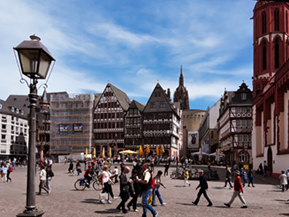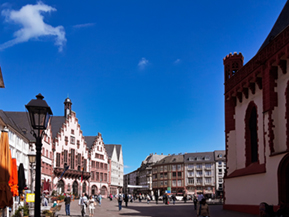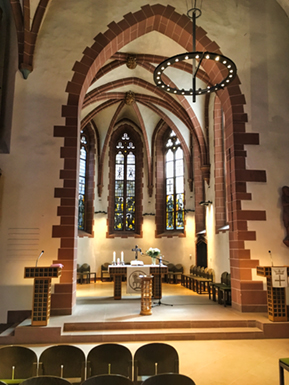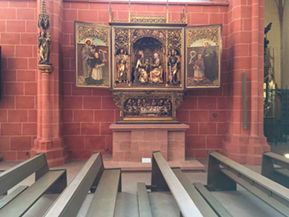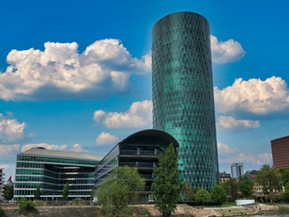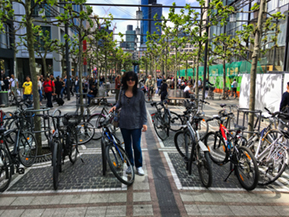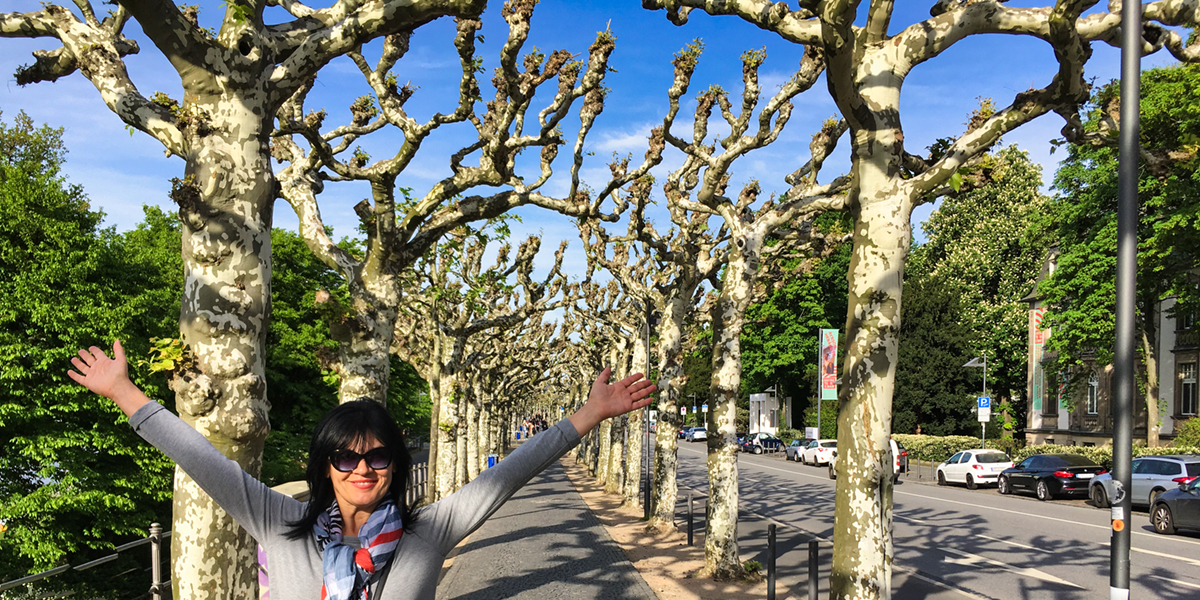

Frankfurt am Main, Germany
Frankfurt may be best known as the business and finance capital of Germany, but it is also one of the most desirable cities to live in and visit. With a rich collection of museums, historic buildings and a lively art and culture scene, Frankfurt is a surprisingly impressive place for a weekend break
Frankfurt means Ford of Franks
The city’s name comes from Emperor Charlemagne, who referred to the settlement as "Franconovud", or "Ford of the Franks", in 794 when he built himself a royal council there. Before Charlemagne, settlements had apparently already existed in the area for hundreds of years, as the Romans built a town there along the nearby Roman Road.
Throughout the Holy Roman Empire, new kings were elected here...
The Holy Roman Empire began in the early Middle Ages and continued until the early 1800s, occupying modern-day Germany, Austria, Switzerland, Belgium and the Netherlands for ten centuries. In 1356, Frankfurt was chosen as the permanent site for the election of emperors and then kings of the Empire. This continued for 400 years, ending with the coronation of the last Holy Roman Emperor, Habsburg Franz II, in 1792. From 1564 kings were also crowned there.
Culturally diversed
It is estimated that there are 180 different nationalities living in Frankfurt and almost one in three people living there do not hold a German passport. Due to Frankfurt's thriving financial trade, thousands of foreigners move to the city every year.
Impressive cultural experience
Both sides of the Main river are lined with an array of top museums. The southern bank alone is home of nine museums, including the German museum of architecture.
Germany’s financial capital...
Seats of the European Central Bank (ECB) Headquarters is in Frankfurt. The European Central Bank (ECB) is the central bank for the euro and administers monetary policy of the eurozone, which consists of 19 EU member states and is one of the largest currency areas in the world.
Frankfurter Wertpapierbörse (FWB®, the Frankfurt Stock Exchange) is one of the world’s largest trading centres for securities. With a share in turnover of more than 85 per cent, it is the largest of Germany's seven stock exchanges. Deutsche Börse AG operates the Frankfurt Stock Exchange, an entity under public law.
Out of the 15 tallest skyscrapers in Germany 14 stand in Frankfurt.
Frankfurt airport system
Frankfurt is home of the third largest airport in Europe and the tenth busiest worldwide, with an average of 56 million passengers each year. The airport’s baggage system is 67 km long handling more than 2 million tons of cargo.
The Römer
The Römer is one of Frankfurt’s most important landmarks. Consisting of three gabled houses, it presides over the Römerberg square, and has been Frankfurt's city hall for over 600 years. There are various explanations where the name "Römer" derives from and according to the City of Frankfurt, that name has something to do with Italian merchants who used to hold fares here in medieval years.
These oldest halls within the Römer, Römerhalle and Schwanenhalle, still look like they would have 600 years ago. The first Frankfurt book fairs took place in these halls, as did other fairs where merchants would sell their products. The massive structures of these rooms have survived the bombardmends of WWII basically undamaged.
Paulsplatz
Paulsplatz (in English: St Paul's Square) is a historic square in the heart of Frankfurt, Germany. St Paul’s Church is located here, dominating the square. The Römerberg, another square, is to the south. Berliner Strasse is immediately to the north. Paulsplatz is a major location for the outdoor Frankfurt Christmas Market.
Cathedral of St. Bartholomew
Frankfurt’s Roman Catholic Gothic church is officially known as the Cathedral of Saint Bartholomew (Kaiserdom Sankt Bartholomaus) or Frankfurt Cathedral (Frankfurter Dom). Its impressive 95 meter tower and spire dominate the city skyline, and it is considered the largest religious building in Frankfurt. Despite its title, Kaiserdom has never been the seat of a bishop and is therefore not officially a cathedral.
The current building is the third church to be built on the plot. Building on the first church began in 1356, although it was only completed in 1793. After a fire in 1867, the cathedral was rebuilt, while Allied bombings in 1944 destroyed the entire interior and left a shell. The cathedral was thus rebuilt for the third time after World War II.
The 328 step climb is definitely worth the effort, to enjoy a superb view over the city.
Frankfurt: the EU financial hub
The city of Frankfurt is the most important financial hub in continental Europe and a key center of financial market stability. It features a unique concentration of European and national supervisory bodies, international banks, insurance companies and legal practitioners.
The financial hub of Frankfurt is home to an exceptional network comprised of 202 banks (40 domestic banks, 162 international banks and 33 representative offices), 7,900 financial services companies and investment funds as well as large branches of all of the world’s best-known consulting agencies, law firms and auditing companies.
For the end a few more from Frankfurt streets....


